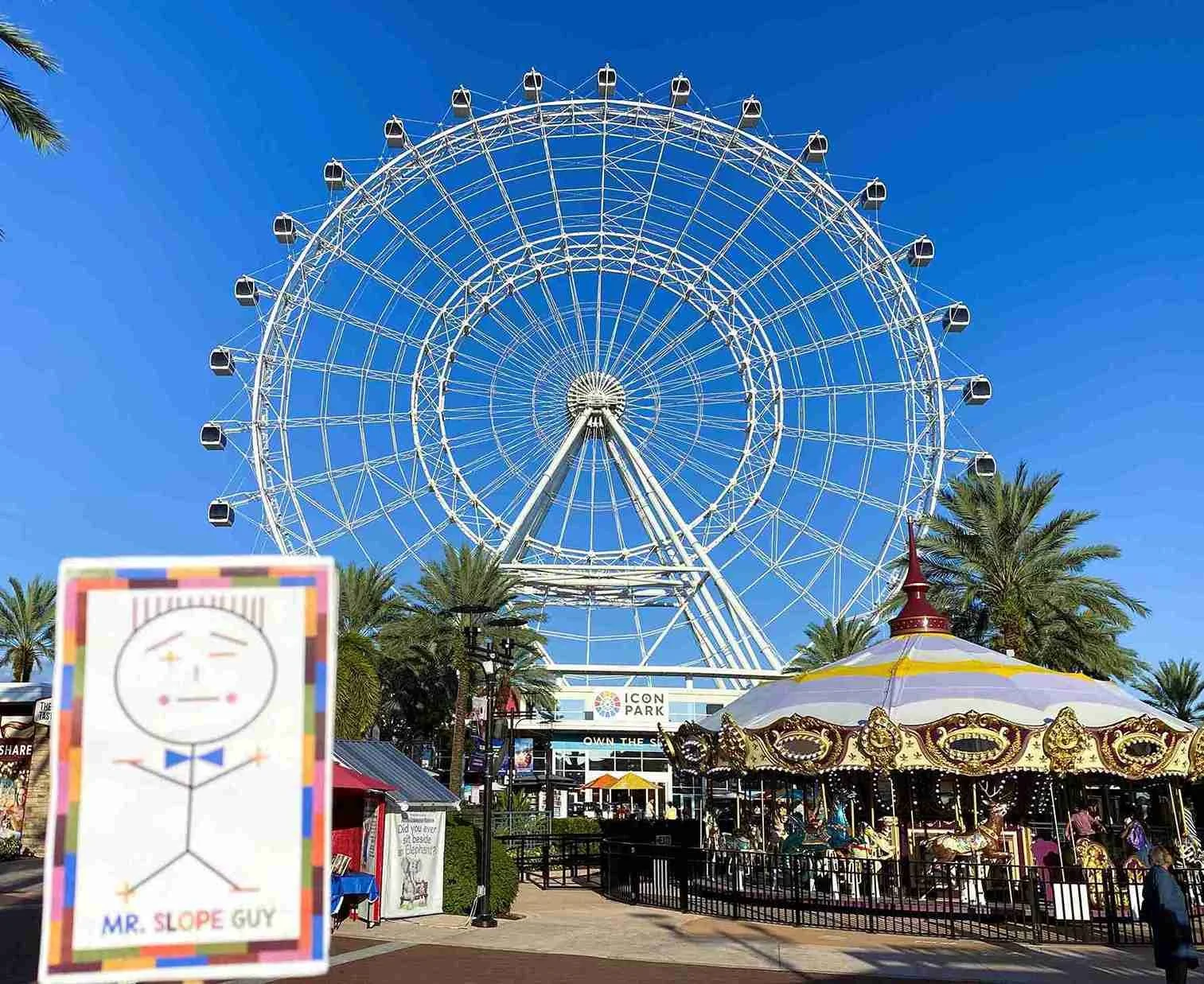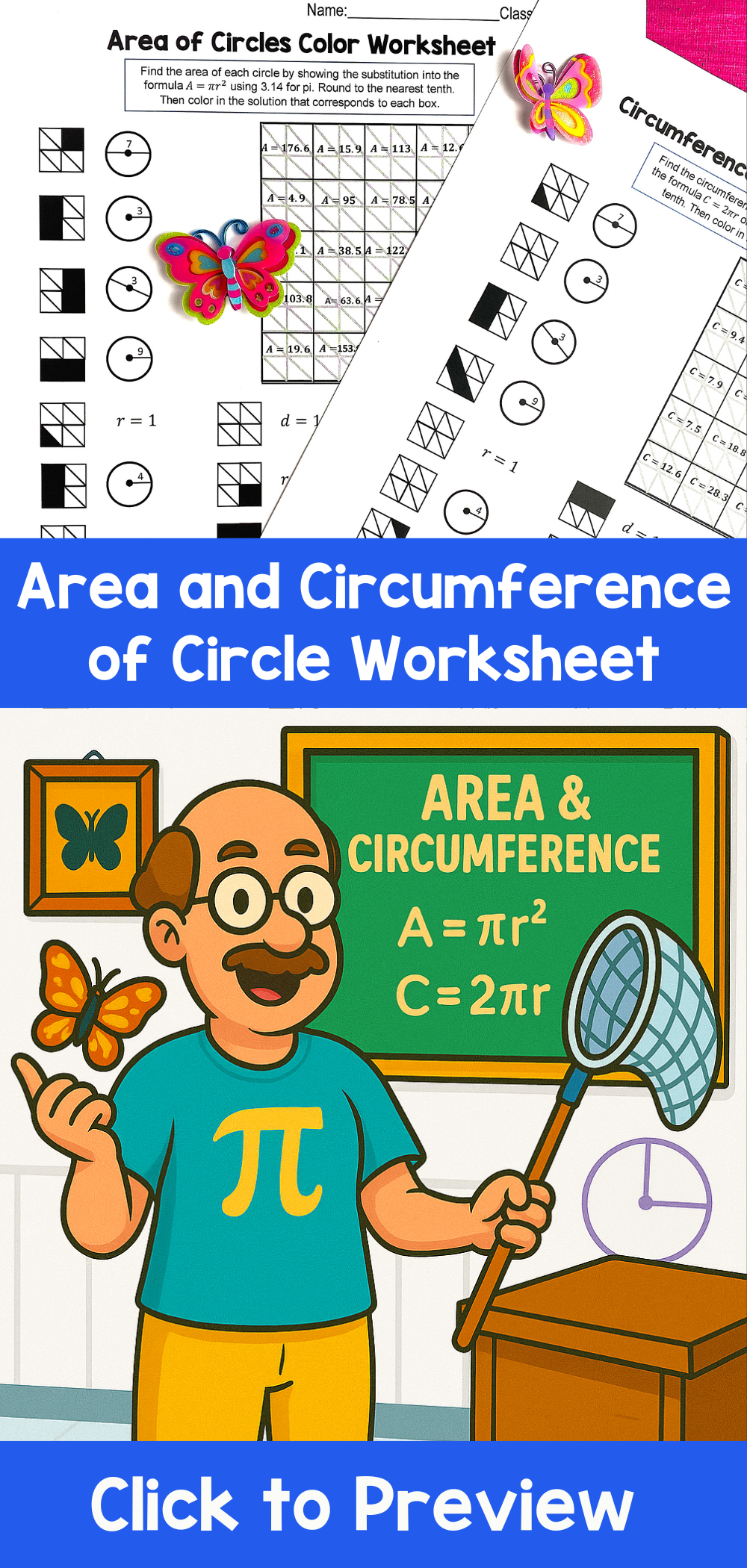Circles Are Not Just for Pi Day: Riding the Orlando Eye with Area and Circumference
When March 14th rolls around, classrooms everywhere celebrate Pi Day with pies, pizzas, and plenty of circle-themed fun. But here’s the truth: circles are not just for Pi Day. They’re one of the most important shapes in math, science, and even daily life. From car tires to clock faces, basketball hoops to round tables, circles surround us.
One of the coolest real-world examples of a circle in action? The Orlando Eye, a giant observation wheel in sunny Florida. Not only is it a jaw-dropping landmark—it’s also a giant math lesson waiting to happen.
Mr. Slope Guy enjoying a sunny day at the Orlando Eye—showing that circles aren’t just classroom formulas, they’re towering wheels of fun and math in motion!
The Orlando Eye: A Circle in Action
The Orlando Eye, designed by Merlin Entertainments, is no ordinary Ferris wheel. At 400 feet tall, it’s one of the largest observation wheels in the U.S. The ride features a smooth, stabilized capsule system (think ski lift instead of swinging carnival seat) that gives visitors breathtaking views of Orlando’s skyline. At night, it’s illuminated by 64,000 LED lights, creating a glowing circle that can be seen for miles.
Now here’s where math comes in:
Circumference in Action: Imagine walking one full loop around the outside of the wheel. With a radius of 200 feet, the circumference is calculated as C=2πr. That means the Orlando Eye’s circumference is about 1,256 feet—almost a quarter of a mile!
Area in Action: If you picture the Orlando Eye as a massive pizza (yes, math teachers always go there), its area would be pi times the radius squared. That works out to about 125,600 square feet. That’s enough space for thousands of pepperoni slices or hundreds of tables for Pi Day celebrations.
Why Students Struggle with Circles
Circles are fascinating, but many middle schoolers get tangled up in the math. Let’s break down some of the most common challenges:
Mixing Up Area and Circumference
Students often confuse which formula measures the “inside space” and which measures the “around the edge.”Radius vs. Diameter Confusion
Give students a diameter, and half will forget to divide by 2 before plugging into a formula. This single slip can completely throw off their answer.Decimals and Approximations
Should they use 3.14 or the pi button on their calculator? Inconsistent rounding choices can frustrate both students and teachers.Abstract vs. Real-World Connections
Without a concrete image—like a Ferris wheel, a bike tire, or a pizza—many students can’t visualize what area and circumference really mean. It becomes just memorized formulas.Word Problem Roadblocks
Circle problems often appear in multi-step word problems (like finding the distance traveled by a wheel in several rotations). Students may understand the math, but the wording trips them up. Focus on combining great math with answering the question being asked.Fraction and Integer Struggles
Since circle problems frequently involve squaring numbers and multiplying by pi, students need strong number sense with both fractions and integers. Weak foundations here create unnecessary obstacles.Attention to Units
Is the answer in square feet, inches, or miles? Many students forget to check, which leaves them with mismatched or incomplete answers.
Teaching Circles with Real-World Examples
The key to helping students master circles is anchoring abstract math to real-world visuals. The Orlando Eye provides a perfect example:
The circumference is like the path a maintenance worker would travel if they walked all the way around the rim.
The area is like the entire space the wheel covers if it were laid flat on the ground.
The radius is half the distance across—easy to point out if students imagine a spoke connecting the center to the edge of the wheel.
Bringing in visuals, stories, or even classroom objects (a dinner plate, or a bike wheel) makes these formulas stick. And when students “see” the math, they’re less likely to make careless errors.
Circles Are Everywhere
These concepts show up in so many places: designing logos, calculating distance in sports, even planning how many tables fit in a circular banquet hall. Giving students practice all year long ensures they don’t see circle formulas as just a once-a-year celebration.
A Colorful Way to Practice
Of course, practice matters—and practice should be fun! That’s why I created the Area and Circumference of Circles Coloring Worksheet.
Here’s what makes it awesome:
25 problems on area and 25 problems on circumference give students plenty of practice.
A picture slowly appears as students solve, giving them instant feedback.
Perfect for middle school Pre-Algebra and Algebra 1 students, it reinforces critical skills while keeping them engaged.
Easy to grade and ready to use, this two-sided PDF is a no-prep win for teachers.
👉 Download the worksheet here: Area and Circumference of Circles Color Worksheet.




